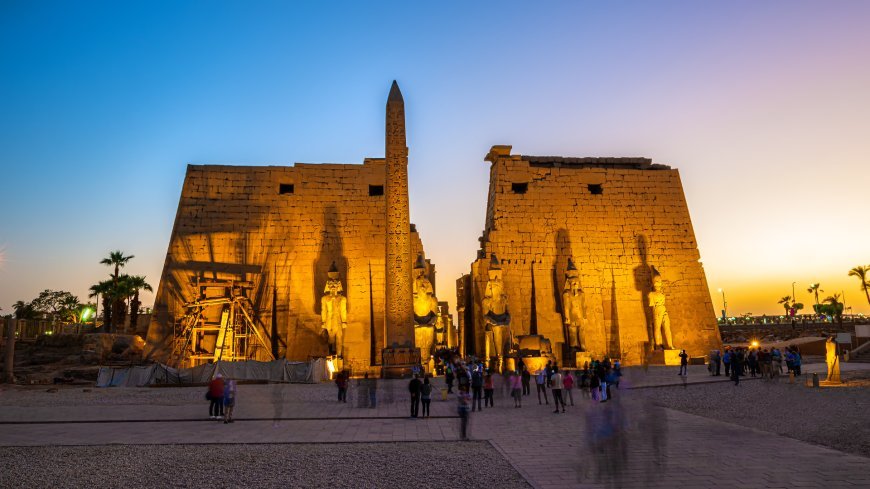Temple of Luxor
"Luxor Temple: Where Ancient Mysteries Meet Timeless Grandeur."

Luxor Temple, Ipet-resyt “Southern Sanctuary” to the ancient Egyptians, was so called because of its location within ancient Thebes (modern Luxor). It is located around three kilometers to the south of Karnak Temple, to which it was once linked with a processional way bordered with sphinxes. The oldest evidence for this temple dates to the Eighteenth Dynasty (c.1550–1295 BC).

Ipet-resyt, unlike most other ancient Egyptian temples, is not laid out on an east-west axis, but is oriented towards Karnak. This is because Luxor Temple was the main venue for one the most important of ancient Egyptian religious celebrations, when the cult images of Amun, his wife Mut, and their son, the lunar god Khonsu, were taken from their temples in Karnak, and transported in a grand procession to Luxor Temple so they could visit the god that resides there, Amenemopet. This was the Opet Festival.
Luxor Temple was not built by one single ruler. The oldest existing structure, a shrine, dates to the reign of Hatshepsut (c.1473–1458 BC). The core of the temple was built by Amenhotep III (c.1390–1352 BC). One of the inner rooms contains a series of scenes that are known as the Divine Birth. They tell the amazing story of how the king’s true father was none other than the god Amun-Ra himself, disguised as Thutmose IV (c.1400–1390 BC). The core of the temple is preceded by a columned hall fronted by a courtyard with columns around its perimeter. Amenhotep III also built the Great Colonnade, which consists of two rows of seven colossal columns. Its decoration, most notably the scenes depicting the Opet Festival, were completed by Tutankhamun (c.1336–1327 BC) and Horemheb (c.1323–1295 BC).

Ramesses II (c.1279–1213 BC) made many additions to Luxor Temple. In front of the Great Colonnade, he built a peristyle courtyard and a massive pylon, a gate with two towers that formed the entrance into temples. In addition to many colossal statues, the pylon was also fronted by a pair of 25-meter-high obelisks made by this great king, but only one remains in place; the other has been at the Place de la Concorde in Paris since 1836.
In the late third century AD, the Romans built a fort around the temple, and the first room beyond the hypostyle hall of Amenhotep III became its sanctuary. The original wall reliefs were covered with plaster, and painted in the Graeco-Roman artistic style, depicting Emperor Diocletian (284–305 AD) and his three coregents. Although these had largely disappeared, efforts are under way to restore these reliefs to their former glory.



















